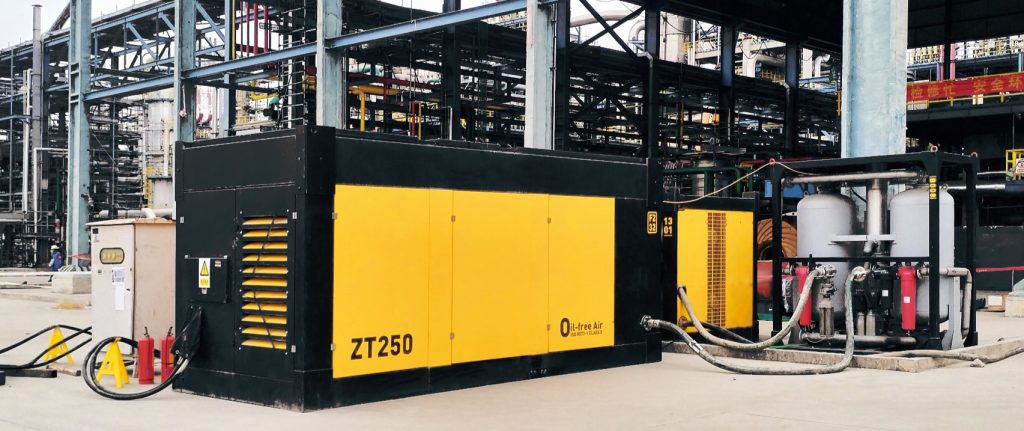In modern manufacturing, compressed air is an essential energy source. To maintain stable air supply and production continuity, air compressors often run continuously—making them one of the largest energy consumers in a plant. In addition to the compressor’s electricity consumption, air leaks and pressure drops throughout the distribution system can lead to substantial energy waste.
Here are seven simple yet powerful methods to improve air compressor energy efficiency and reduce operational costs:
1. Upgrade to High-Efficiency Equipment
Replace outdated piston compressors with modern screw compressors. Screw compressors offer better reliability, simpler structure, less maintenance, and higher efficiency. Many newer models now exceed national energy efficiency standards, offering significant long-term savings.
2. Detect and Repair Air Leaks
Leaks account for 20–30% of compressed air loss in most factories. A leak as small as 1 mm under 7 bar pressure can cost over $500 (¥4000) annually. Inspect all hoses, joints, and valves regularly and fix leaks promptly to avoid unnecessary losses.
3. Monitor and Control System Pressure Drop
Every component in the air system causes a pressure drop. A total drop greater than 1 bar between compressor and usage point may force higher compressor output, increasing power consumption by 7–10%. Install pressure gauges at key points and maintain them regularly.
4. Use Variable Speed Drive (VSD) Compressors
VSD compressors adjust motor speed based on real-time demand, ensuring on-demand supply. These units eliminate unloading losses, improve efficiency by up to 30%, and are ideal for fluctuating air demands. Large plants can also benefit from high-capacity centrifugal compressors during peak usage.
5. Implement Centralized Multi-Unit Control
Integrating multiple compressors under a central control system prevents overlapping pressure settings and unnecessary energy use. It also allows synchronized control with downstream equipment, improving reliability and performance.
6. Lower Intake Air Temperature
Locate compressors in ventilated areas or even draw cooler air from outside. Keep heat exchangers clean and maintain oil quality to ensure optimal cooling performance. Cooler intake air improves compression efficiency, leading to lower power use.
7. Recover Waste Heat
Install heat recovery units to utilize waste heat from the compression process for heating water used in industrial or employee facilities. This can significantly reduce heating costs and enhance energy efficiency.
Conclusion
Improving compressed air efficiency requires attention from plant managers, technicians, and operators alike. With coordinated efforts and the right strategies, businesses can achieve energy savings, stable production, and long-term cost reductions.


